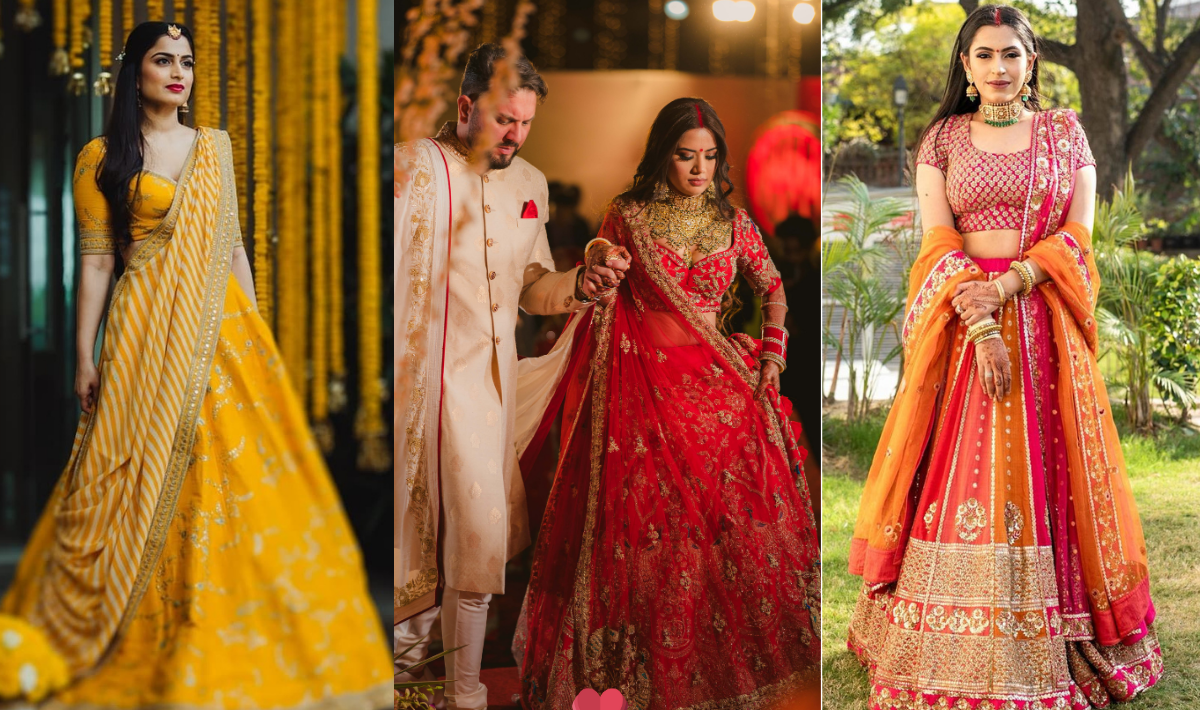There are some garments, and their design, that bring about certain feelings from certain sections of the observing public. The choli is definitely one such item as its history has been tied to the rise of a particular regime and is seen as a holdover of that government’s time in power.
However there are also several nice little tidbits about the choli that would inform and entice those who were interested in what is seen as one of the most sensuous of all garments ever created for women.
History of The Choli
The choli is actually one part of what is considered to be normal Indian, or Indian inspired, attire. The full set includes: the lehenga and the dupatta, combined with the choli are normally enough to create quite the striking outfit. The choli is essentially a fitting blouse with embroidery, the lehenga – a long skirt and dupatta – a long piece of cloth. Paintings from Maharashtra – a state in the western peninsular region of India – and Gujarat – a state on the Kathiawar peninsula in India – regions from the first millennium BCE are considered the first recorded examples of the choli. (Molnupiravir)
The first iteration of the choli only covered a woman’s breasts, leaving her back bare. It has since then been adapted to take on many functional and ceremonial forms. There are, and can be, many other interpretations of the choli that are worn throughout India – and the rest of the world – today and include styles fastened with ties, versions with rounded necklines, and some that shape or flatten the breasts. The choli is distinguished in different regions by various decorations. The fabric can be dyed bright colors, and, or embroidered with mirrors. Cholis are made of cotton or silk but can also be made of organza and brocade for special occasions – such as weddings and the like.
Different Types of Choli Combinations
As mentioned before, the choli is often paired with the lehenga to make up two – thirds of a dressed outfit. However, that is not the only garment the choli could be partnered with. The ghagra is a type of garment that is traditionally attached to several Indian states such as Uttarakhand, Himachal Pradesh, Jammu and Kashmir, as in the Pakistani provinces of Sindh and Punjab. Although being basically similar, the ghagra is thought of akin to a half slip while the lehenga is more modern in application.
Highlighting the differences between the two, the lehenga is the lower part of the attire, which is worn below the navel. It is upheld by an elastic or a thread called Nada in Hindi. Lehenga dominates any Indian inspired marriage function. It is worn as a bridal dress or at Sangeet functions. This beautiful dress is designed from materials such as crepe, velvet, net, among other fabrics including the aforementioned silk and cotton.
While the ghagra is also the lower part of any couplet with the choli, it is not necessary to wear it below the navel. Girls and women have been known to drape it above the navel. Nada is also used in ghaghra to uphold them.
A lehenga enhances beauty, as each one is a unique piece – stitched tailor fit depending on size. In comparison, ghagras are loose, hence, can be worn by anyone. Lehengas are used to show off the perfect figure and hence, are designed in A-cut, fish cut and other tight-fitted cuts while ghagras are typically loose skirts. Finally, a lehenga has exotic designs while a ghagra is normally made from cotton and is simple. It is a rare occurence to see an expensive ghagra.
It is fortunate that the choli, whether it is lehenga-choli or ghagra-choli, has quite a few different ranges of styles that could be employed by any one. This listing is aimed at giving a primer as to what to try when attempting to style or drape a choli.
Different Ways to Drape a Choli
- Backless Lehenga Choli – This choli could be paired with raw silk lehenga and could be bedazzled with embellishments. There is also the possibility of draping with a plain saree style dupatta if there is a need.
- Long Skirt Lehenga Bottom and Contrast Choli Top – There is always the opportunity to mix and match a lehenga with a contrasting colored choli. For maximum effect ensure that either the choli or the lehenga is of plain color or design.
- Cape Style Drape – This drape style is commonly also called the cape style dupatta drape. It is simply draped from back to front from both sides and left free to flow towards the front.
- Over Two Arms Dupatta Drape – This style of drape requires the wearer to take the center of the dupatta behind their back. And then gracefully placed onto their forearm leading it to the front.
- Open Drape Around The Neck and Chest – A very simple style and is perfect for day functions pre wedding traditions such as Sangeets and Mehendis. It looks light and airy, making it a breeze for the wearer of the outfit.

